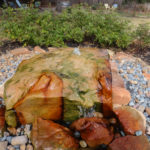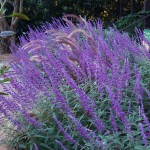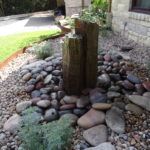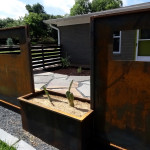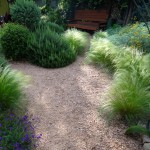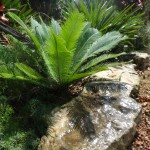A strange title for an entry?
It only gets worse…much worse.
The first part of this post deals with a couple of creatures so disturbing and hideous they are reserved for nightmares, phobias and really cheap horror movies. These are the creatures with snapping tails, the roach-like and the gilled, think black lagoon, they could already be on your property as I write!
Some of them were in mine.
So be warned, if you are afraid of all things gross and grubby, you may find the next few images slightly troublesome.


I am referring to the abominations that we all immediately want to perform the highland fling on, when and wherever we encounter them…but wait, as it turns out some of these aquatic, squirming chaps are not so bad after all…remember these home coming queens, from my last post?
Well thanks to fellow blogger “metamorphosa” who first identified these aquatic rats for me, I am still squirming, but not nearly quite as much.

As it turns out, this unusual-looking insect larva, is the larva of a rat-tailed maggot, (not the prettiest name, I know)…as if I haven’t had to deal with more than my fair share of “real” rat issues last year. I now apparently have the equatic version of them in my rain water collection tank…well that’s just great!
Actually as it turns out it really is!
This insect larva belongs to a group of flies known as syrphid flies. Syrphids are also known as flower flies or hover flies. They mimic bees or wasps and are very common on flowers and plant foliage. Despite their threatening appearance, all syrphid flies are harmless to people and are actually beneficial because they help pollinate plants. While feeding, the larva raise their long, posterior respiratory tube vertically to the surface in order to breathe (shudders). Often all that can be seen of them is a group of breathing tubes sticking upwards from the mud and rotting leaves at the bottom of stagnant pools. which stands to reason as my water collection tank has a bunch of leaves in the bottom of it.
This tube is normally about 3/4 inches long, but the insect can telescope it out to severaltimes the length of its body (longer shudders, followed by some small involuntary mouth movements).

This one was taken recently on my copper canyon daisey.
It is thought that the mimicry protects hover flies from falling prey to birds and other insectivores which avoid eating true wasps because of their sting. However a flower fly and a wasp can be distinguished by counting the wings. The flies have two wings, and the wasps and bees have four. Hover flies get their name from their characteristic flight pattern of hovering nearly still, then darting a short distance very rapidly only to start hovering again, a pattern not seen in the wasps and bees they mimic.
About 6,000 species in 200 genera have been described.
Syrphidae are common throughout the world and can be found on every continent except Antarctica!
And the Toe-Biters? Do you really want to know? While I was trying to identify the Syrphidae lava wwwrockrose.blogspot.com brought up these rather fine chaps, roaches with swim fins. (Excessive shuddering, followed by slight knee jerking action and exaggerated mouth clacking!)
Toe nippers is what they are, naturally I was obliged to look into these nasty Michael Phelps as well!
Belostomatidae is a family of insects known as giant water bugs or colloquially as “Toe Biters.”
They occur worldwide and are popular food in Thailand…mmm, yes I ‘ll have two please waiter, medium rare!
No, No, No – more! Here is a male toe-biter with eggs on its back (Brrrr) This one stands about 12 inches high. (just kidding)! These are large bugs though.
Toe biters are aquatic bugs found in running water. They can often be found clinging motionless to objects at the bottom of a stream, where they wait for a chance to catch prey. They feed mostly on aquatic insects, tadpoles, and small fish, rather than toes. (Audible sigh) They can fly, but do so mostly at night.
No need for a sci-fi reference for this one!
“And now for something completely different.”

More moss boulders and scaling some more decomposed granite?
This sight means only three things:
1) On hearing the “Custom Stone” truck pull up into my driveway,
my wheelbarrow immediately decides to deflate its one and only tire.
2) I am starting prep-work on my middle bed.
3) Advil will shortly need to be administered.
So I dug this “moonscape” down about a foot and a half, (remember it was full of trash and treasure) then filled it with gravel. It stayed like this for quite some time, while I contemplated what I was going to do with it. I had many ideas from a swath of blue dune grass to lavender to a small swimming pool, ahh perhaps one day.
Anyway for the time being it is going to be a larger version of this bed:
Why? Because this little bed complete with larva rocks, and a multitude
of succulents, stone crop and eccheveria, spread fast, and was
constantly full of suprises!
Anyway back to this new larger bed…

Many, many wheelbarrow loads later, I had a level bed of granite
on top of the pebbles . I then started on some creative “moundage”.
I had the idea of a crescent mound in the foreground that followed the
curve of the boulders, and perhaps an island mound further back.

It is quite hard to see the undulation in these shots, I can’t believe I about to say this but “I needed more sun” for contrast. I top dressed the granite with sharp cactus soil with perlite and organic matter. I mostly avoid “Miracle Grow” products but this one does work extremely well to kick start tiny cactus and succulent plants. I will now let the top dressing slowly permeate the granite until I am ready for planting after the last frost. I found that a 2/3rd granite to 1/3rd cactus mix is in the right ballpark. All I will do to finish this up is to introduce some lava rock boulders and after planting, on with some recycled tumbled glass! I am planning to plant gopher plants all the way around the boulder edge.
Gopher plant Euphorbia biglandulosa. I hope this will offer a spiraling look
all around this border…it is going to take quite a few of them!
Now, where is that Advil.
A few more Winter observations:

Can you believe there are still flies on what is left of my

Japanese Fatsia? Fatsia japonica
Here is a detail of one of it’s leaves.

A combination of variegation. Various ivy’s, variegated ginger and
an Agave “americana” variegata. Great winter foliage color.

Deep in the heart of an ornamental cabbage.
Another purple still in bloom right now comes from Purple Heart Tradescantia pallida also
known as Purple Queen or Wandering Jew.
Ok, one last purple…my now discarded amaranth seed heads.
Exploding cattails are filling the air with their floating seeds,
most likely the best snow I am going to get this year. Once fertilized,
the female flowers transform into the familiar brown “cigars”
also called candlewicks, punks, ducktails, and marsh beetles.

Another chap enjoying the white mold growing on the aphid honey dew on my mex. lime tree. (Thanks again rockrose!)
Sleep tight, don’t let the bed bugs bite, especially the nasty toe-biting variety.
Stay Tuned For:
“Taro Roll”
All material © 2009 for east_side_patch. Unauthorized reproduction prohibited.




























